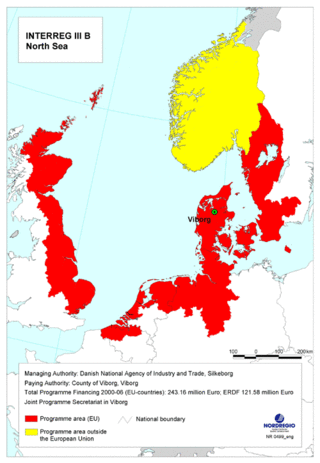North Sea
2007 Schools Wikipedia Selection. Related subjects: General Geography
The North Sea (historically also known as the German Ocean) is a part of the Atlantic Ocean, located between Norway and Denmark in the east, Scotland and England in the west, and Germany, the Netherlands, Belgium and France in the south. An offshoot of the North Sea is the Skagerrak, between Denmark, Norway, and Sweden, which connects to the Baltic Sea through the Kattegat, Öresund, the Great Belt and the Little Belt. In the south, the North Sea connects with the rest of the Atlantic through the Strait of Dover into the English Channel and in the north through the Norwegian Sea.
Major rivers that drain into the North Sea include the Forth (at Edinburgh), Elbe (at Cuxhaven), the Weser (at Bremerhaven), the Ems at Emden, the Rhine and Meuse (at Rotterdam), the Scheldt (at Flushing), the Thames, and the Humber (at Hull). The Kiel Canal, one of the world's busiest artificial waterways, connects the North Sea with the Baltic.
Naming
Its name originates from its relationship to the land of the Frisians (see Frisia). They live directly to the south of the North Sea, and to the west of the East Sea (Oostzee, the Baltic Sea), the former South Sea (Zuiderzee, today's IJsselmeer) and the today reclaimed Middle Sea (Middelzee).
In classical times this body of water was also referred to as the Oceanum- or Mare Germanicum, meaning Germanic Ocean or Sea. This name was commonly used in English and other languages along with the name North Sea, until the early eighteenth century. By the late nineteenth century, German Sea was a rare, scholarly usage even in Germany. In Danish the North Sea is also named Vesterhavet (besides Nordsøen), meaning Western Ocean as it is located west of Denmark.
History
The bed of the North Sea forms two basins. The main northern one lies to the north of a ridge between north Norfolk and Frisia. The southern basin, if not flooded, would now drain towards the Strait of Dover thence to the English Channel. During the Devensian glacial much of the northern basin was covered by the ice sheet and the remainder, including the southern basin, was tundra. However, during the Cromerian, there was a natural dam of chalk between the South Foreland and Cap Blanc Nez. This is what is normally called the "Strait of Dover Land Bridge" but, since it collapsed (probably mainly during the Anglian glacial), the lower ridge mentioned above has been the highest part of the land bridge between continental Europe and Great Britain during periods when the volume of land ice in the world has led to low levels of the oceanic surface. The Channel Tunnel runs through the chalk base of the former natural dam so that the approach routes to the tunnel afford good views of the landward ends of the dam as they remain today.
